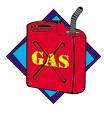Use this blog to share items of interest to those on the carfix_online mailing list. Note: Video and audio clips are not to be reproduced, duplicated, copied, for sale, trade, resell or exploit for any commercial purposes. If you like what you see here, why not Join our group at groups.io/g/carfixonline
Monday, June 29, 2015
Monday, June 22, 2015
Monday, June 15, 2015
Monday, June 08, 2015
Used parts are often called LKQ- What is LKQ?

Used parts are often called LKQ for like kind & quality. LKQ parts are factory parts that come from salvaged vehicles and resold. LKQ parts are OEM parts that have been taken from another vehicle that is of the same make, model and body style. This "other vehicle" just happens to be in a junk yard.
It is a vehicle just like the one being repaired but it has been totaled and the salvage yard is selling the good parts from the vehicle. You are entitled to having your car returned to pre-loss condition under your insurance policy. The question arises,"Which is better for your car, the use of OEM (Original Equipment) or After-Market (non-Original Equipment) parts?"The answer: The parts used must be of L.K.Q. (Like Kind and Quality). It is the role of the collision repair facility to act as advocate and advisor, negotiating with the insurance company what is best for you. Remember that they are working for you, not the insurance company. Another thing to remember is that the insurance company is responsible for returning the vehicle to pre-loss condition. This means that if your car is five years old with 90,000 miles on it, the insurance company will do what is best based on the value and condition of the vehicle to return it to that value. This scenario may dictate the use of a less expensive after-market part of comparable quality. Comparable quality is defined as having a correct fit and OEM crashworthiness. If the part fails to match these qualifications, the insurance company may elect to go with a good used part off the same year, make, and model car, which would return the vehicle to pre-loss condition.
Remember, the insurance company is obliged to return the vehicle to its present value, not its value when it was new!
Next week , do you know what "betterment" refers to? Come back here to find out!
Monday, June 01, 2015
Dangers of filling a gas can

Gas cans should always be placed on the ground when filling. Never fill any portable container (regardless of material) while it is inside your car or pickup bed. Do you know why?
An approved gasoline container also dissipates static electricity, as long as it is placed on the pavement before filling begins. Leave the can in the trunk or pickup box, however, and it is a different story. A trunk liner, bed mat or bed liner insulates the vehicle from the ground and the static buildup of electricity has nowhere to go. Static buildup occurs and if it releases, the resulting spark can set off the gasoline.
The static comes from the gasoline itself. As the fuel flows through the hose and nozzle, static electricity builds up on the gasoline. This charge takes several seconds to dissipate after the gas is poured into the can. If the can is insulated from ground, the spark cannot dissipate and it builds up until discharge occurs.
According to Chevron, the condition most likely to lead to spark discharge is the filling of a metal container that is placed upon the plastic bedliner of a pickup. In their experiments, this situation resulted in the most fires. They are also quick to point out that while static discharge in metal containers caused the most fires, plastic containers are not immune.Be safe, Place the container on the ground before filling to allow static buildup to dissipate. Make sure the filler nozzle touches the rim of the filler opening to help static electricity dissipate.
Subscribe to:
Posts (Atom)